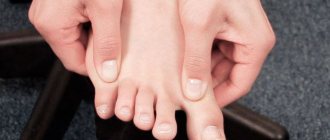Sociopathy (dissocial personality disorder) is a term that has recently appeared in psychiatry and denotes a persistent disturbance of a person’s character, which complicates his social adaptation, accompanied by a disregard for foundations and norms. Literally it can be translated as “socio” - society, “pathia” - disease. Literally, sociopathy is “a social disease, a violation of relationships with people.” Sociopaths are distinguished by aggressive behavior, bad character, and inability to build relationships with others. Today, the term “sociopathy” is fashionable thanks to various films and TV series about heroes who “go beyond” social rules. During the development of domestic psychiatry and psychology, scientists used another term: “psychopathy.” Within this disorder, their types are distinguished according to different classifications, but the following characteristics remain the same:
- persistence of manifestations of violation (they do not go away);
- totality (the violation affects the entire personality as a whole, and not individual mental functions);
- violation of social adaptation.
The line separating psychopathy and sociopathy is very arbitrary. And it lies in the origin of the disorder (etiology). Psychopathy is traditionally considered more of a congenital disorder, in which there are specific features in the structure of the brain and/or disruption of biochemical and metabolic processes that cause behavioral problems. Sociopathy has more social causes in origin - a destructive family, chronic psychotrauma, deprivation of affection and care in early childhood, a distorted type of upbringing, etc.
Etiology of sociopathy
There is no consensus among doctors and scientists about why sociopathy occurs. Experts name the following causes of the disorder:
- heredity;
- mistakes in education;
- problems in society;
- copying the behavior of a person suffering from this illness: imitation of an individual who is in a close environment - family or friends.
As a rule, the reasons act in combination, “layering” on each other, so it is extremely difficult to single out one factor.
Types of Sociopaths
Individuals with dissocial disorder are divided into two types:
- Passive.
- Active.
The first type includes calm and silent people, characterized by good behavior due to fear of being punished. Such individuals are aware of the consequences of their actions and restrain themselves. A provoked individual of the passive type behaves very violently. This type adapts more easily to society, and psychotherapy in this case is more effective. The active type cannot restrain himself. Such people want to attract everyone's attention and are characterized by conflict, fights and aggression.
Manifestation of sociopathy
From the moment of manifestation, sociopathy usually persists throughout the rest of life. A distinctive feature of sociopaths is considered to be destructive behavior towards the environment and towards oneself. Such people often suffer from alcoholism, drug addiction, and lead a promiscuous sex life. Individuals with dissocial disorder are unable to plan long-term. Restriction of freedom and suppression of desires are tolerated negatively by them. They may threaten others and use force. Sociopaths are excellent at manipulating other people. Since they do not understand interpersonal relationships and are not afraid to offend or hurt another person, they view others as means to obtain the desired result. Individuals with dissocial disorder always try to dominate others. What others want and feel is of no concern to them. At the beginning of communication, sociopaths leave a good impression. They can behave well and observe standards of decency as long as they feel their own benefit.
Psychological help
Cognitive behavioral psychotherapy (CBT) is the gold standard non-pharmacological treatment for SAD. Cognitive CBT techniques target maladaptive thoughts and attitudes; the behavioral component usually involves exposure therapy. The effectiveness of CBT has been proven by many RCTs and meta-analytic studies. There are studies suggesting similar effectiveness of CBT and pharmacotherapy in the treatment of acute SAD. It is reported that after completion of treatment, the improvement achieved with CBT lasts longer, compared with the results of pharmacotherapy. CBT for SAD can be done individually or in a group. Although several studies suggest the preference for individual psychotherapy, meta-analyses have found no significant difference in effectiveness.
The effectiveness of CBT components has also been studied. Exposure therapy has been shown to be effective without the addition of other CBT components.
Interpersonal-focused CBT produces the same results as standard CBT but also increases relationship satisfaction. The effectiveness of interpersonal psychotherapy in CBT does not have a sufficient evidence base; there are studies that say that it is ineffective. It appears to be less effective than traditional CBT.
Also less effective than CBT, but still capable of improving SAD, is mindfulness-based cognitive therapy.
ICBT (Internet-assisted CBT) is a new type of psychotherapy that makes CBT more accessible to patients with anxiety and mood disorders. Studies have compared ICBT and CBT (individual and group). ICBT has been shown to be effective in treating SAD. Most ICBT programs involve minimal contact with a therapist via email or telephone. Many programs include participants communicating on online forums. It remains unclear whether the participation of a psychotherapist is a prerequisite for ICBT. Studies comparing therapist-guided and therapist-free ICBT have conflicting results. All RCTs assumed that before starting ICBT, the patient first communicated with a psychotherapist in person or by telephone and contacted him after completion of the course. Little is known about the effectiveness of self-administered treatment (ICBT or self-help books) that is provided without prior discussion and subsequent contact with a therapist.
Signs of sociopathy
If the disease is hereditary, then the first signs of sociopathy appear in the child in the preschool period. The symptoms of sociopathy (dissocial disorder) are expressed vividly. This is explained by the fact that a preschooler cannot understand his benefit by observing the norms and rules of good behavior. Such children lack the experience to control their impulsiveness. Therefore, their antisocial behavior is often accompanied by negative actions characterized by cruelty. They torture animals, can even kill them, and bully peers and younger children. Children's disobedience manifests itself in such actions as screaming, biting, fits of anger, running away from home, and wandering. A preschooler never demonstrates tenderness towards his family. The older the child gets, the more he learns to disguise himself, his behavioral manners become tougher, his actions become more sophisticated. If parents react incorrectly, this behavior can become even more entrenched and worsen. It is very important to develop an adequate parenting style, since childhood is the period when the child is most sensitive to social norms; he copies behavior subconsciously. This is intended by human nature. It is possible and necessary to influence the development of sociopathy and mitigate its manifestations in childhood. By adolescence, the symptoms of a personality disorder begin to “bloom”: a teenager may begin to leave home, steal, severely beat other people, demonstrate pseudo-suicide attempts in order to receive benefits from relatives. There is a very high probability of various chemical and non-chemical dependencies, etc.
Symptoms of Sociopathic Disorder
In boys, the first manifestations are observed in the primary grades of high school, in girls the disorder appears later - during puberty. A patient with sociopathy is characterized by:
- tendency to lie;
- cruelty and aggressiveness;
- promiscuity;
- selfishness.
Children with such a deviation do not want to go to school, damage property, get into fights, bully the weaker, torture animals, and often leave home and wander. The main feature of a patient with a sociopathic disorder from an early age is an oppositional attitude towards his parents. They show open hostility towards strangers or simply neglect their interests. It is important for them to undergo a consultation with a psychiatrist to rule out other pathologies.
After committing another offense, the patient is not tormented by his conscience, even if he is caught at the scene of the “crime”. He always considers others to blame, shifting all responsibility onto them and completely justifying himself. Often people with sociopathic disorder start smoking, drinking, and taking drugs early on. They have increased libido and promiscuity in sexual relations.
At the first sign of sociopathic disorder, you should consult a doctor. Otherwise, the person will experience desocialization and begin to have problems with the law.
After reaching adulthood, patients almost always look like ordinary people, with normal social adaptation and adequate behavior. They are witty, charming and attract attention. But this impression of them is formed only with infrequent contacts. With close people and friends, patients behave like manipulators; they do not know how to empathize and do not experience emotional attachments.
To achieve their goal, they lie, imitate symptoms of diseases, talk about their “unhappy and difficult” life in order to arouse pity and achieve their intended goal. Regardless of the circumstances, they follow their own path, wanting to get as much pleasure as possible, and do not consider it shameful to commit antisocial acts. Guilt and shame do not exist for a person with a sociopathic disorder; he considers it his right to get what he wants by any means. Even after punishment and condemnation, they do not draw any conclusions and do not learn from their own mistakes. At work, they often shift responsibilities to others, are constantly late, and perceive criticism from colleagues or superiors as unfair accusations.
Sociopathic disorder can manifest as passive or active. With passive sociopathy, a person somewhat limits their actions according to religion or law, which protects them from receiving punishment. But at the same time, patients constantly violate the rules of decency, morality and conscience. Active sociopaths are completely devoid of all restrictions, most of them end up in prison. To carry out their business, they often join criminal gangs, fraudulent groups and sects.
The sociopathic disorder persists in the patient until the end of his life, while after 40 years of age, their activity in the criminal field decreases. Many of these patients suffer from concomitant affective disorders and chronic diseases; many of them become drunkards or drug addicts. The use of psychotropic drugs leads to an acceleration of social maladjustment; in this case, assistance should begin in the drug treatment department.
If you find signs of a sociopathic disorder in your relative, call the number listed on our website. An experienced specialist will tell you how to behave with such a person and what actions to take.
Diagnosis of sociopathy
Only after a thorough history can a person be diagnosed with dissocial disorder. The specialist records a stable lack of unity in most activities, emotional instability, attacks of aggression and poor control of actions. Symptoms of sociopathy include:
- lack of assessment of one's behavioral manners;
- disrespectful attitude towards people;
- refusal to accept generally accepted norms and laws.
This illness differs from the following mental illnesses:
- bipolar affective disorder;
- schizophrenia;
- neurosis;
- various manias.
Examination criteria
Sociopathy can be assumed if the following manifestations are present:
- predisposition to hostility that develops into violence;
- lack of feelings of guilt and the ability to draw conclusions from one’s own negative experiences;
- indifference to the feelings of loved ones, lack of empathy;
- ignoring moral principles, social rules and norms of behavior;
- strong denial;
- avoidance of any relationships and helplessness in maintaining them;
- accusing people around you for no reason, making unfounded claims;
- The individual welcomes conflict situations, so he often creates them himself.
All of the above symptoms are not always clearly expressed, sometimes they have a partial manifestation.
Additional symptoms of sociopathy that are of great importance when making a diagnosis:
- Predisposition to deception. An antisocial personality easily lies, manipulates people, and enjoys his actions.
- Frequent arrests of individuals by law enforcement agencies or public charges resulting from disobedience to the country's laws and authorities, as well as moral and ethical standards.
- Fights, protests, manifestations of irritability and aggression towards other people.
- Committing unjustified and risky actions.
- Involuntary antics in behavior and communication.
- Constant irresponsible attitude towards compliance with the regime and external requirements, financial obligations (for example, work from 09:00 to 17:00).
- Receiving joy from the discomfort caused and damage caused to others.
Pharmacological treatment
Levels of Evidence
1 – Meta-analysis or at least 2 RCTs with placebo control
2 – At least 1 RCT with placebo control or active control
3 – Study without control group, with at least 10 participants
4 – Case reports or expert opinion
Levels of evidence do not indicate the nature of the result (positive, negative, doubtful), they speak about the quality of the analysis performed.
Recommended treatment
First line – Level 1 or 2 evidence and clinically proven efficacy and safety
Second line – Level 3 evidence and clinically proven efficacy and safety
Third line – Level 4 evidence and clinically proven efficacy and safety
Not recommended – No effect with level of evidence 1 or 2
First line
SSRIs, SSRIs, anticonvulsants, and benzodiazepines have been proven effective for SAD. The evidence for the effectiveness of citalopram for SAD is limited, but it is probably as effective as other SSRIs, unlike fluoxetine, which has been shown to be ineffective for SAD in studies and may therefore be considered the least effective SSRI.
Pregabalin: Pregabalin is effective in the treatment of SAD at high doses (600 mg/day), but is ineffective at low doses (150-300 mg/day). Although pregabalin has level 1 evidence for its effectiveness, it is unclear how its effectiveness compares with that of SSRIs. In addition, the effectiveness of SSRIs has a broader spectrum in relation to typical comorbid conditions.
Second line
Benzodiazepines: A meta-analysis found that benzodiazepines are as effective as SSRIs, but because they have little effect on common comorbid conditions and may cause dependence in substance abusers, benzodiazepines are recommended as second-line treatment.
Antidepressants: RCTs have shown citalopram to be as effective as moclobemide. Phenelzine has been shown to be effective, but due to dietary restrictions, interactions with other medications, and the risk of hypertensive crisis, it is recommended as a second-line treatment. Anticonvulsants: There is (second-level) evidence that gabapentin is as effective as tiagabine.
Third line
Antidepressants: Studies on the effectiveness of fluoxetine are conflicting. A large-scale RCT showed a positive effect as strong as that of CBT. But two other, small RCTs showed no effect. Therefore, it can be assumed that fluoxetine is less effective compared to other SSRIs.
The situation is the same with moclobemide. Several RCTs showed a positive effect, several did not. Moclobemide is more effective than CBT at the beginning of a course of psychotherapy, but after 6 months CBT shows a stronger effect than moclobemide. Two small RCTs of mirtazapine gave conflicting results, one showing efficacy and the other not. Comparisons of the effectiveness of 60 mg/day duloxetine with 120 mg/day duloxetine showed no benefit from the higher dose.
All of these drugs, as well as anticonvulsants, olanzapine, selegeline, atomoxetine, can be recommended as third-line agents for patients who have not responded to first- and second-line drugs as monotherapy and in combination with additional drugs.
Additional drugs
The strategy of using adjunctive medications has been studied in patients who have not responded adequately to antidepressant treatment and may be used in cases of refractory SAD.
A drug | Level of evidence |
| SSRIs | 1 |
| Escitalopram | 1 |
| Fluvoxamine | 1 |
| Paroxetine | 1 |
| Sertraline | 1 |
| Fluoxetine | 1 (conflicting data) |
| Citalopram | 2 |
| Paroxetine as an adjunctive drug | 3 |
| SSRI | |
| Venlafaxine | 1 |
| Duloxetine | 2 |
| TCA | |
| Clomipramine | 3 |
| Imipramine | 3 (negative result) |
| MAOIs and OIMAOs | |
| Phenelzine | 1 |
| Moclobemide | 1 (conflicting data) |
| Other antidepressants | |
| Mirtazapine | 1 (conflicting data) |
| Bupropion | 3 |
| Benzodiazepines | |
| Clonazepam | 1 |
| Alprazolam | 2 |
| Bromazepam | 2 |
| Clonazepam as an adjunctive drug | 2 (negative result) |
| Anticonvulsants | |
| Pregabalin | 1 |
| Gabapentin | 2 |
| Levetiracetam | 2 (negative result) |
| Divalproex | 3 |
| Tiagabine | 3 |
| Topiramate | 3 |
| Other drugs | |
| Atenolol | 1 (negative result) |
| Buspirone | 1 (negative result) |
| Atomoxetine | 1 (conflicting data) |
| Propranolol | 2 (negative result) |
| Selegilin | 3 |
| Pergolide | 3 (negative result) |
| Buspirone as an add-on drug | 3 |
| Pindolol as an additive drug | 2 (negative result) |
| Atypical antipsychotics | |
| Olanzapine | 2 |
| Quetiapine | 2 (negative result) |
| Aripiprazole as an add-on drug | 3 |
| Risperidone as an add-on drug | 3 |
| First line: Escitalopram, fluvoxamine, paroxetine, pregabalin, sertraline, venlafaxine Second line: Alprazolam, bromazepam, citalopram, clonazepam, gabapentin, phenelzine Third line: Atomoxetine, bupropion, clomipramine, divalproex, duloxetine, fluoxetine, mirtazapine, moclobemide, olanzapine, selegiline, tiagabine, topiramate Additional drugs (third line): Aripiprazole, buspirone, paroxetine, risperidone Not recommended as additional drugs: Clonazepam, pindolol Not recommended: Atenolol*, buspirone, imipramine, levetiracetam, propranolol*, quetiapine *Beta blockers have been successfully used during public speaking. |
Prevention
Since the etiology of dissocial personality disorder has not been fully studied, there are no preventive measures for this disorder. It can only be noted that sociopaths need a favorable environment. The child should feel the attention, care, affection, kindness and tender attitude of his parents. It is important that the child’s mother and father set a positive example of relationships - respect for all family members, no power or aggression. The child must understand what role people play in relationships.
Correction (treatment) of sociopathy
As mentioned above, the greatest effectiveness of correction of sociopathy is achieved in childhood. Parents are not recommended to aggressively combat sociopathic manifestations in preschoolers; it is better to immediately contact a psychotherapist or clinical psychologist to develop the most appropriate parenting strategy. Dissocial personality disorder is difficult to treat. The reason for this is the lack of ability to criticize their behavior and the reluctance of sociopaths themselves to turn to a specialist. It is difficult for a psychotherapist to establish a connection with a sociopath, which is important for proper therapy, since the client himself does not want to change anything. If the form of deviation has mildly expressed symptoms of an aggressive nature, those suffering from sociopathy can consult a specialist themselves. Usually they complain about the difference with other people, a different type of thinking, a feeling of lack of important moments in life, etc. This is an excellent therapeutic request that medical psychologists and psychotherapists at the Ember Center successfully work with, provided that the client himself is aware of the need to receive help. The Ember Center successfully works with the correction of dissocial personality disorder. Our psychotherapeutic course is aimed at strengthening family ties, observing traditions, and developing respect for laws, norms of behavior and rules.
Treatment of dissociative (conversion) disorder
Treatment for a diagnosed dissociative disorder must begin immediately; this is the key to complete recovery. It first aims to relieve symptoms, then reduce and eliminate stressors and prevent relapse.
Treatment varies depending on the type of disorder, but usually involves only psychotherapy of proven effectiveness, carried out in consultation with a psychotherapist. There is no cure for DR, so pharmacotherapy in these cases is aimed only at eliminating the symptoms of concomitant conditions, for example, anxiety, depression, panic attacks.
Cognitive behavioral therapy and dialectical behavior therapy are two of the most effective methods of psychotherapy for dissociative (conversion) disorders.
Features and advantages of treatment of dissociative (conversion) disorders at the Rassvet clinic
Dawn psychotherapists diagnose and treat common and rare diseases of psychogenic origin, including dissociative (conversion) disorders. Our doctors use proven effective psychotherapeutic techniques: cognitive behavioral therapy, dialectical behavior therapy, acceptance and responsibility therapy, interpersonal therapy and others. Medicines and extensive examinations are prescribed only in addition, according to indications.
If you (or your loved ones) have recently experienced a stressful situation; faced aggression or violence; lost their ability to work, lost contact with others and the outside world; you have sleep disturbances and anxiety; depression or other symptoms of a behavioral or mental disorder appear, make an appointment with a Dawn psychotherapist. Our doctors will definitely help you regain the joy of life, get rid of fears and negative thoughts, and gain confidence and comfort.
What to do if a sociopath doesn’t want to change anything, but his family suffers?
A typical situation today: the mother of a young man calls and asks him to “cure him.”
During the conversation, it turns out that several specialists and different methods have already been “tested”, and all in vain. As a rule, the leading symptom is alcoholism or drug addiction. In such situations, we recommend that the mother herself come to an appointment first and start working on herself, her experiences, her reactions. After all, the behavior of a sociopath that he shows is inextricably linked with the reactions of family members (so-called codependency). Both mother and other relatives in this case are codependent. They are subconsciously manipulated by a sociopath, participate in his “performance”, pathological life system, scenario (they can be called differently, the meaning will not change). Therefore, by changing the attitude and behavior of relatives and mothers, we will influence the behavior of the sociopath, and perhaps motivate him to seek face-to-face correction from a specialist. You can also contact us through popular messengers:
Causes of social phobia
Social phobia refers to a large group of anxiety disorders that are characterized by a panicky, irrational fear of something. In this case, it is the fear of being involved in any activity or action associated with public attention. This may be an inability to do something in front of strangers, an extreme degree of discomfort under the gaze of others, a desire to hide from them, and much more.
What exactly is the source of this disorder is still completely unknown. Thus, there is a higher predisposition to social phobia in people whose parents also suffer from this condition. But what exactly becomes a risk factor—genetic information or the formation of a stable pattern of behavior under the influence of sophiophobic parents—has not yet been determined. But at the same time, a relationship has been identified between traumatic events and the development of social phobia. These could be episodes of violence at school, any situations with loss of reputation in a public place (for example, a seam on a skirt coming apart and underwear visible to others, an attack of vomiting in public transport, etc.).
In addition, a higher tendency to social phobia is determined in those who received insufficient attention in childhood and those who grew up in conditions of overprotection. In the first case, it is believed that a child with a deficit of basic security (the feeling of security provided by parents) develops an attitude that the world around him is dangerous. If such a concept takes root, the likelihood of developing anxiety disorders is very high. With overprotection, another mechanism for the development of social phobia is observed. A child who does not have the opportunity to fully grow up becomes dependent on his parents and subconsciously satisfies their need for constant control.
But often social phobia develops for more “banal” reasons. A person who has been under stress for a long time due to conflicts at work, who is ridiculed or bullied by his boss, gradually begins to transfer the feeling of threat from one or several people to the entire outside world.
Symptoms of social phobia
The most insidious feature of social phobia is its imperceptible appearance and equally imperceptible progression. This often deceives both the social phobe himself and his loved ones. First, a person, under a plausible pretext, refuses to attend any event. After a while, the situation repeats itself, but with different characters or events. And imperceptibly a person isolates himself from everything that causes him mental discomfort and causes him fear.
Write to WhatsApp
COST OF TREATMENT
Therefore, it is important not to lose attention to the symptoms of an impending problem or an already developed disorder:
- Recurrent, persistent fear of some activity or situation. This can be anything - from a hysterical reluctance to answer a call on Skype to a categorical refusal to attend school, any events, etc. At the same time, a social phobe can come up with the most compelling reasons for his refusal, but if the situation repeats, he will refuse again. And again under the “correct” pretext.
- A real situation is not necessary for a panic attack to occur. Sometimes, just the thought of speaking in public or the memory of a traumatic event is enough for a social phobe to lose control of his emotions and reactions.
- Social phobia is often accompanied by somatic symptoms. When thinking about the object of one’s fear or being in a real situation, a person’s heartbeat quickens, the skin turns pale and sweat appears on it, the patient experiences dry mouth, dizziness, nausea, etc.
- The main negative judgments are directed at oneself - one’s own appearance, speech, intelligence, etc. are overly critical.
- Events from the past are often discussed. They are predominantly evaluative in nature, but those around them are evaluated. “They looked at me with hostility”, “As soon as I left, they began to discuss me and laugh at me”, “They talked about me because they suddenly fell silent when I approached” - remarks like these often appear in the speech of a social phobia.











